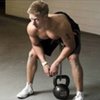The method behind building muscle is simple at its core: train, eat, sleep, and grow. However, the science behind growth is one of the most sought-after topics on the Internet, with dozens and dozens of differing methods to help aspiring lifters get the gains they want.
Some coaches may go as far as withholding information like it's some voodoo secret, but I'm not that kind of coach. I'm here to cut the bullshit, help you fix whatever you may be doing wrong, and help you grow like a pro.
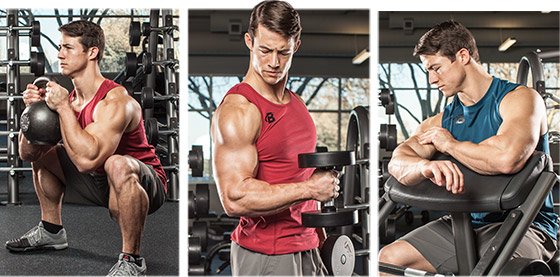
As a former skinny lad, I know the ups and downs of the muscle-building process all too well. I've been there and done that. Fast-forward years later, and I've helped dozens of guys pack on muscle. They initially come to me with preconceived notions on the best way to build muscle—high volume, low volume, proper splits, specific set and rep schemes, and on and on. I help them go back to the basics to explore what makes muscle grow.
Mechanisms of Hypertrophy
The confusion of beginner lifters lies in an elementary understanding of the fundamentals. Muscle growth comes from specific stimuli. As mentioned in Brad Schoenfeld's review of "The Mechanisms of Muscular Hypertrophy and Their Application to Resistance Training," the three most important mechanisms for hypertrophy are:
- Mechanical tension
- Metabolic stress
- Muscular damage
The three together exert the greatest stimuli for muscle growth. Now let's discuss what each means for training in the real world.
Mechanical Tension
Mechanical tension is achieved by using a substantial load and performing exercises through a full range of motion for a certain amount of time. The time you spend under tension creates mechanical tension in the muscles; ergo, the more significant the time, the more significant the mechanical tension. But, tension alone won't signal maximum muscle growth. Tension, in addition to a full range of motion, induces a substantial hypertrophic response. In other words, maximal muscular development comes from a foundation of strength. Greater strength begets greater mechanical tension across all exercises. It sounds kind of circular, but the basic gist of it is that you should lift heavy at a relatively slow tempo through a full range of motion to promote muscle growth.
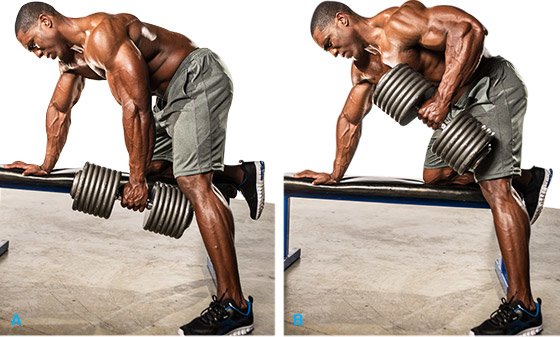
Metabolic Stress
Engorged muscles play an important role in hypertrophy. If you've ever experienced a sleeve-splitting pump after the end of an arms workout, you've experienced metabolic stress. When you work out hard to achieve a pump, you build up lactate, hydrogen ions, creatinine, and other metabolites, but you also prevent blood from escaping. This metabolic stress in the muscle signals adaptation.
Muscular Damage
It's not uncommon to hobble out of bed the day after demolishing a workout that, in turn, demolishes your muscles. This soreness might feel like the end of the world, but it's also indicative of muscular damage. Luckily, soreness isn't for naught; that damage to muscle tissue creates a temporary inflammatory response and releases the necessary signals for muscle growth.

It's important to note that more damage instigates a great need for repair and nutrient delivery to the source of damage. This reversal of damage promotes muscle fibers to recover and come back stronger in order to respond to future stimuli. Some soreness is OK, but excessive damage may interfere with training frequency to the detriment of maximal hypertrophy.
In order to achieve the most muscular damage, focus on exercises that your body is not accustomed to, intentionally slowing down eccentric phases, and using full range of motion on multi-joint movements.
Three Is Better Than One
The interplay between all three of these mechanisms is crucial to helping you fill out your "smedium" T-shirt collection. No mechanism alone provides the necessary stimulus for growth—they must all be trained for maximal gains. For example, the Romanian deadlift is a high-tension exercise which—when performed with significant load, reps, or both—will elicit all three mechanisms of hypertrophy.
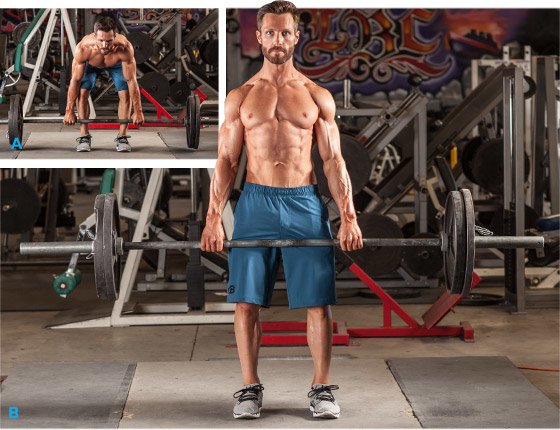
Deadlift
In the immortal words of Ronnie Coleman, "Everybody wants to be a bodybuilder, but don't nobody want to lift no heavy-ass weights." To grow, you should find something really heavy and pick it up with enough frequency and duration to create mechanical tension, incur muscular damage, and boost metabolic stress.
The Workout
Start off each workout with heavy compound exercises for 3-5 sets of 3-6 reps. These will build a big strength foundation while stimulating mechanical tension in the muscle fibers.
Afterward, the majority of training volume will be from 2-3 exercises with moderate loading at 6-12 reps per set. These aren't some arbitrary numbers; this rep range provides the perfect 1-2-3 punch of mechanical tension, metabolic stress, and muscular damage you need. Keep rest periods to roughly 1 minute between sets1.
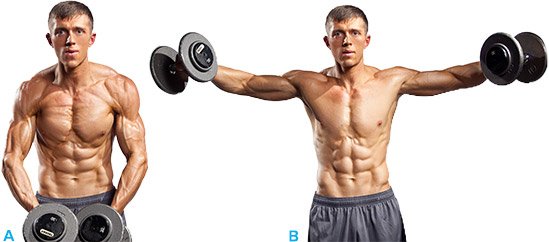
Side Laterals
Finally, end each workout with an exercise performed in the high-rep range—between 12-25 reps per set—to improve lactate threshold and to increase the metabolic stress of the working muscles. Although loaded sub-maximally, these reps should leave your muscles burning and lungs screaming after only one or two sets.
